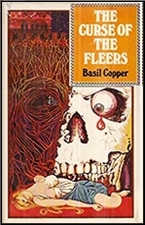MORAY DALTON – The Body in the Road. Hermann Glide #1. Sampson Low, UK, hardcover, 1931. Harper & Brothers, US, hardcover, 1930. Black Cat Detective #8, US, digest-sized paperback, 1944, Dean Street Press, UK, trade paperback, 2019; introduction by Curtis Evans.

Moray Dalton was the working byline of Katherine Dalton Renoir, the British author of 29 mysteries published between 1924 and 1951. If you live in the US, you can be forgiven if you’ve never heard of her. Only three of her books have ever been published in the country, including this one (but how it happened to be published here a year before the British edition, I have no idea).
It looks as though, however, if sales do well, that the folks at Dean Street Press are doing their best to be sure readers in this country can easily get their hands on them. Five were published last year and five more will be published in March. This is a totally unexpectedly bonanza for fans of obscure detective fiction from the Golden Age of Detection.
I caution you, though, on the basis of this, the first of her work I’ve read, that any comparison to the contemporary authors of her time, those who are still well known today, are well in the favor of the latter. Dalton’s approach to both dialogue and storytelling are both rather unfocused and naive.

The following excerpt comes from page four of the Dean Street edition. Two young women who have just met as musical performers at the same cafe, are talking:
Linda laughed. “All right. I ought to be getting back to my diggings, anyway. I wish you shared them with me. There’s a bedroom to let on my floor. We’d have such fun.”
“It would be jolly!” said the other [Vivian], wistfully.
Vivian is living with n older woman who has acted as her guardian since she was young, and who has kept her under her very strict eye for all that time. It is no wonder she wishes to rebel, and finally she does, and in fact she decides to go into partnership with Linda on setting up a small tea shop together.
Until, that is, the day they find the titular body in the road, that of a small dog that has been badly injured. They go off in opposite directions to obtain help, but Vivian is never to be seen again. And who is accused but Linda. Luckily for her, the new Lord Harringdon in the area has met her and has taken more than a liking to her.

The case against Linda is flimsy, to say the least, but the local police are inexplicably set on their case against her. Lord Harringdon also investigates, but in his mind it is the strange doctor with stranger patients and medical staff that gets all of his attention. Finally, about 45 pages from the end, he hires Hermann Glide, a frail-looking private eye in London who resembles (at first appearance) “a monkey on a barrel organ.”
Glide is not given many pages to do his work, and in fact we see very little of it, but he does his job, and as it turns out in the end, he did it perhaps a little too well. I’ll not say more about that, but it is one of the more interesting thing I can hint at in terms of the detective work that is done.
Overall then, I’m glad I read this book, and I plan to read more of Moray Dalton’s work. As for you, though, unless you’re really a devout fan of old traditional detective novels, I’d recommend this on to you only if you’ve run out of other (and more solidly constructed) ones to read.
The Hermann Glide series —
The Body in the Road (1930/31)
The Night of Fear (1931)
Death in the Cup (1932)

